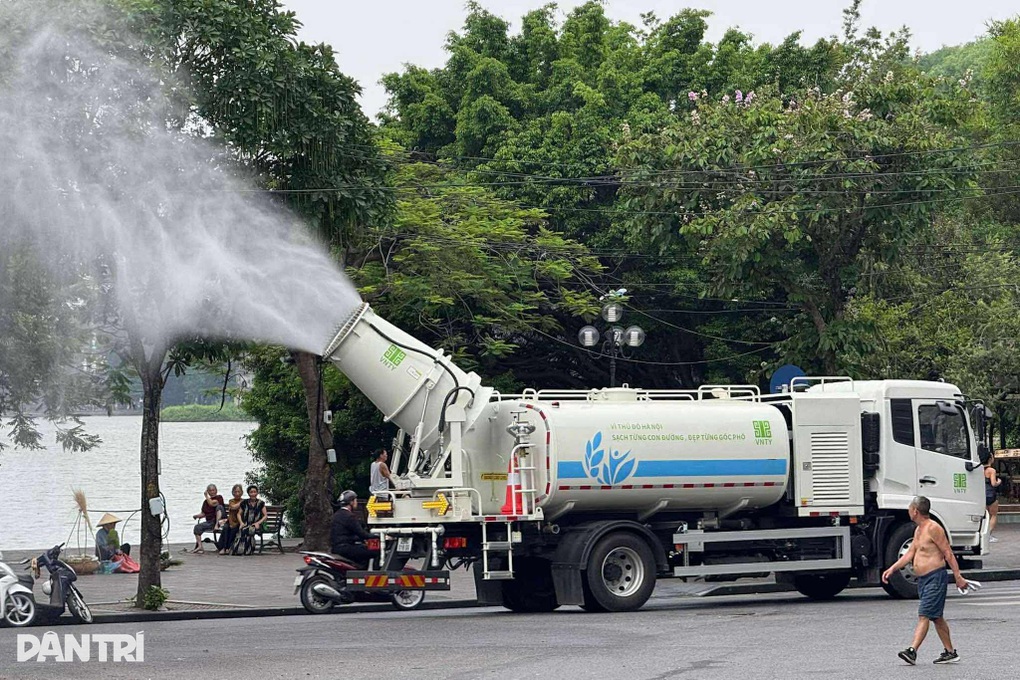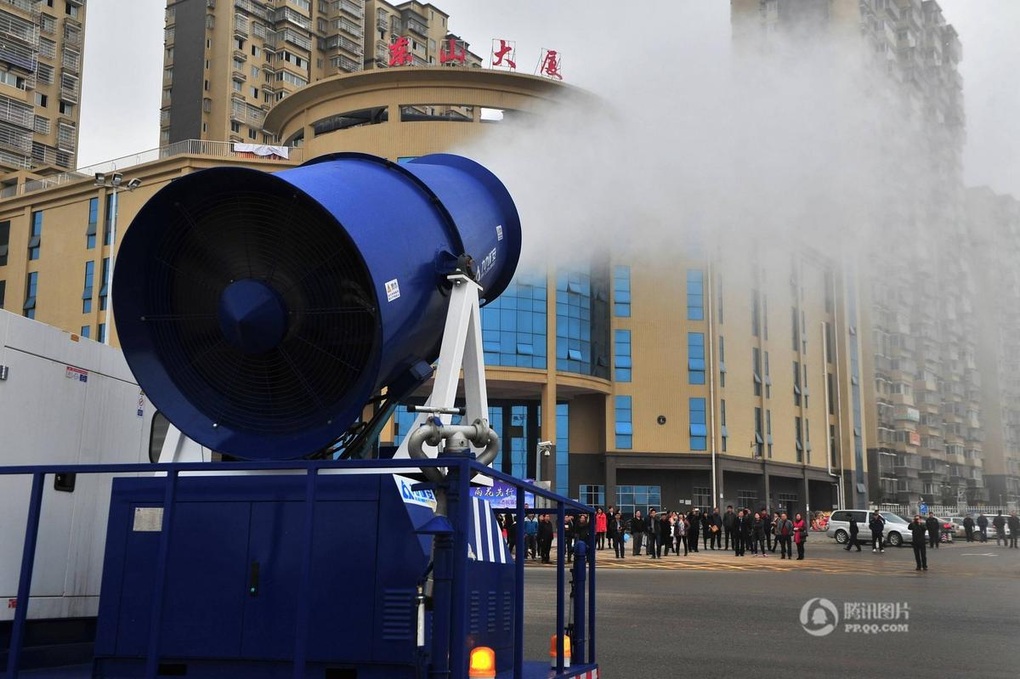During the days when Hanoi was covered in thick smog, the image of vehicles with giant spray pipes spraying fog on the streets attracted the attention of many people.
This type of vehicle is also known as a fog cannon or dust suppression cannon.

Fog guns operating in Hanoi (Photo: Manh Quan).
Since early July, fog trucks have been operating on the streets of Hanoi. The vehicles are expected to operate in 13 inner-city wards: Cua Nam, Hoan Kiem, Kim Lien, Ba Dinh...
This is one of the most modern models of vehicles for environmental sanitation, becoming an effective solution to help cities solve the problem of fine dust and air pollution.
Creates super small water particles to suppress fine dust
Fog guns operate on the principle of high-pressure ultra-fine mist spraying, creating water particles of 50-150 micrometers in size. These tiny mist particles adhere to fine dust (PM2.5, PM10) in the air, making them heavier and falling to the ground, thereby helping to clean the surrounding air.
According to the importer, the device used in Hanoi can hold up to 10,000 liters of water, create a mist up to 100m wide, over 35m high and can operate continuously for 75 minutes.
The gun is equipped with a nozzle up to 80cm wide, with a spray angle of up to 45 degrees - suitable for construction sites, major streets and crowded traffic areas.
What is the world of applications like?
According to SCMP, China was one of the first countries to apply fog guns on a large scale. In Beijing and Xi’an, the authorities deployed hundreds of mobile fog trucks since 2014 to deal with fine dust.
Each device can spray mist up to 120m away and 60m high, creating a “light rain” of water droplets as small as dust. The operator can control the cannon to rotate 270 degrees by remote control to extend the spray range.
According to the report, air quality improved significantly immediately after the fog guns were activated, making the space “brighter and cleaner in a short time”. On average, each device operates twice a day, but can increase to three to five times on days with heavy fine dust.

Fog guns in operation in China (Photo: SCMP).
In New Delhi, India, which regularly ranks among the world’s worst for air pollution, fog cannons are being used as an emergency measure. As part of the “Clean Air for Delhi” campaign, the devices are deployed in areas near schools and major roads to clear the air for short periods of time.
Faced with increasingly serious air pollution in the capital New Delhi, the city government has also issued regulations requiring all high-rise commercial buildings, hotels, offices and educational institutions to install fog guns to control fine dust on site.
The expanded use of fog cannons is expected to help reduce PM2.5 fine dust, which is the main cause of respiratory and cardiovascular diseases and reduces the average life expectancy of urban residents.
In Europe, the European Union-funded AIRUSE project has evaluated fog cannons in cities such as Barcelona (Spain), Lisbon (Portugal) and Florence (Italy).
The results showed that this technology is significantly effective in reducing fine dust on site, especially in dry or light wind conditions.
Specifically, the report shows that spraying fog on the entire road surface has a clear effect on air quality: On the day of application, the amount of PM10 dust is reduced by 90% or more; 1 day later, the reduction is about 60%; 2 days later, the reduction is 30%; by the 3rd day, the effect almost stops.
Meanwhile, if only sprayed near the roadside, the effectiveness is lower: the first day it decreases by 40%; the next day it decreases by 20%; the third day it is almost ineffective.
Source: https://dantri.com.vn/khoa-hoc/phao-xa-suong-mu-ap-che-bui-min-o-ha-noi-the-gioi-ung-dung-nhu-the-nao-20250718075041202.htm




























































































![[Infographic] In 2025, 47 products will achieve national OCOP](https://vphoto.vietnam.vn/thumb/402x226/vietnam/resource/IMAGE/2025/7/16/5d672398b0744db3ab920e05db8e5b7d)





Comment (0)